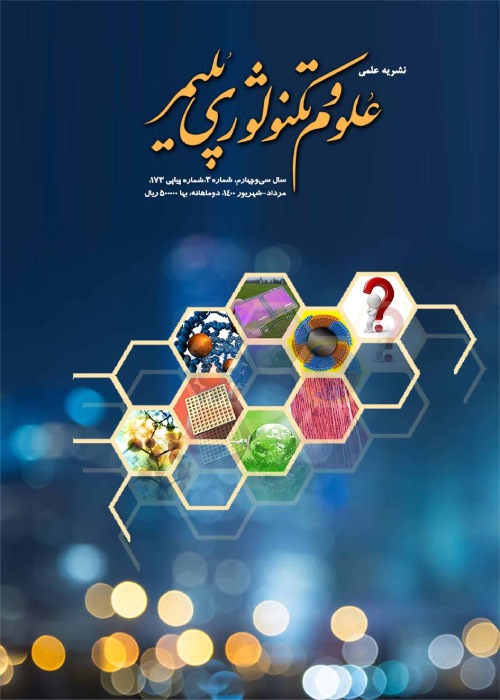Synthesis and Characterization of Iron Magnetic Nanocomposite Hydrogel Based on Modified Sodium Carboxymethyl Cellulose Using Acrylamide and Acrylic Acid and Investigation of Drug Delivery Properties
Author(s):
Abstract:
Hydrogels are three-dimensional polymer networks that can absorb and retain a huge amount of aqueous fluids even under certain pressure, but do not dissolve in water. They are responsive to environmental stimulants such as pH and ionic strength of the solution. In this study, a series of novel sodium carboxymethyl cellulose-based hydrogel nanocomposites were synthesized using acrylamide comonomer in the presence of iron magnetic as crosslinker and acrylic acid ammonium persulfate (APS) comonomer as initiator. All reaction variables affecting the water absorbency of the hydrogel nanocomposite including the concentration of crosslinking agent and initiator, and comonomers ratio were optimized in order to achieve the maximum absorption capacity. The experimental data showed that the hydrogel nanocomposite exhibited improved swelling capacity compared to the nanoparticel-free hydrogel. In addition, optimized hydrogel nanocomposite showed a good water uptake ability and the equilibrium swelling capacity was achieved within the initial 10 min. In examining the quality of the synthesized hydrogel nanocomposite, the amount of absorption in saline solutions of different concentrations was measured. Furthermore, the swelling behavior of hydrogel nanocomposite in solutions with different pH values was evaluated. The chemical structure of the hydrogel nanocomposites was characterized by means of transmission electron microscopy (TEM), scanning electron microscopy (SEM), vibrating sample magnetometry (VSM), thermogravimetry analysis (TGA), derivative thermogravimetry (DTG) and Fourier transform infrared spectroscopy (FTIR). In order to study the drug delivery and drug release behavior, the release of sodium diclofenac as a model drug from synthesized hydrogel nanocomposite was examined in two acidic and basic buffer environments. The results indicated that this hydrogel nanocomposite may be an appropriate alternative for drug release processes in human body.
Keywords:
Language:
Persian
Published:
Iranian Journal of Polymer Science and Technology, Volume:29 Issue: 3, 2016
Pages:
265 to 275
magiran.com/p1579374
دانلود و مطالعه متن این مقاله با یکی از روشهای زیر امکان پذیر است:
اشتراک شخصی
با عضویت و پرداخت آنلاین حق اشتراک یکساله به مبلغ 1,390,000ريال میتوانید 70 عنوان مطلب دانلود کنید!
اشتراک سازمانی
به کتابخانه دانشگاه یا محل کار خود پیشنهاد کنید تا اشتراک سازمانی این پایگاه را برای دسترسی نامحدود همه کاربران به متن مطالب تهیه نمایند!
توجه!
- حق عضویت دریافتی صرف حمایت از نشریات عضو و نگهداری، تکمیل و توسعه مگیران میشود.
- پرداخت حق اشتراک و دانلود مقالات اجازه بازنشر آن در سایر رسانههای چاپی و دیجیتال را به کاربر نمیدهد.
In order to view content subscription is required
Personal subscription
Subscribe magiran.com for 70 € euros via PayPal and download 70 articles during a year.
Organization subscription
Please contact us to subscribe your university or library for unlimited access!


